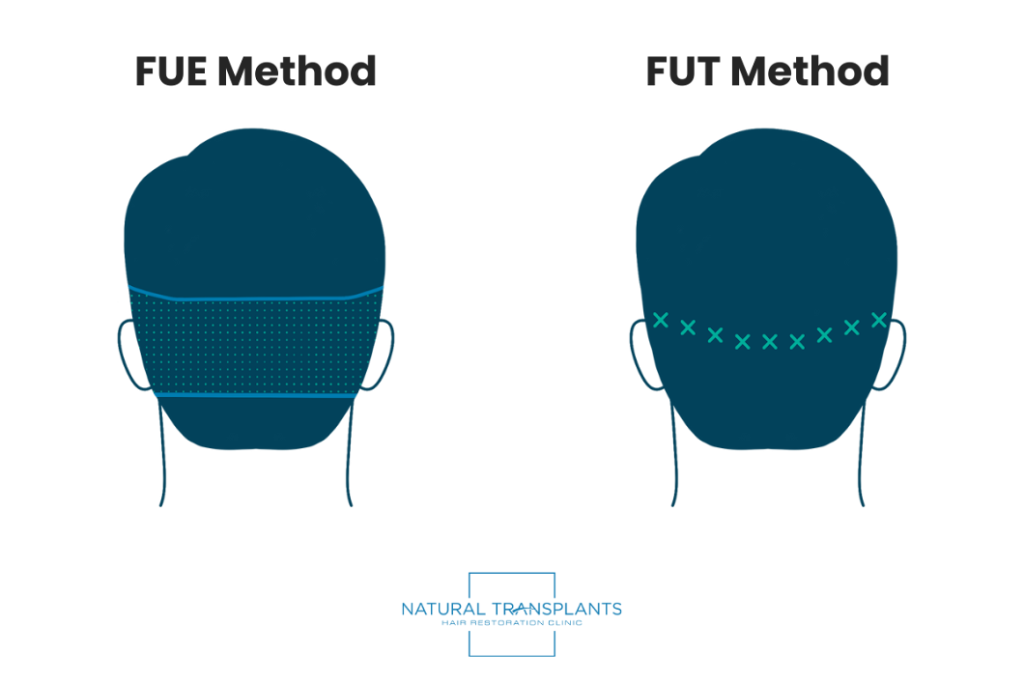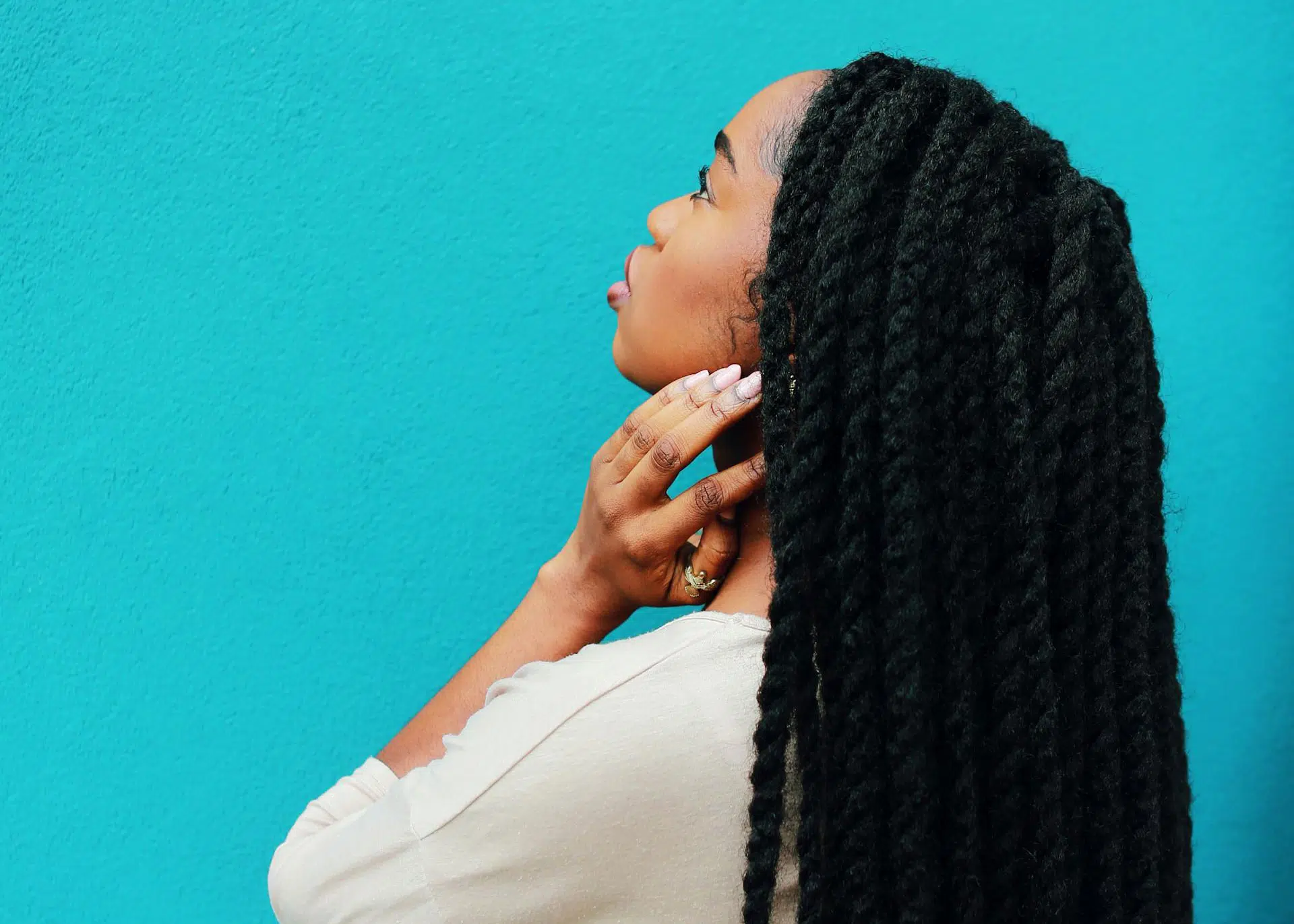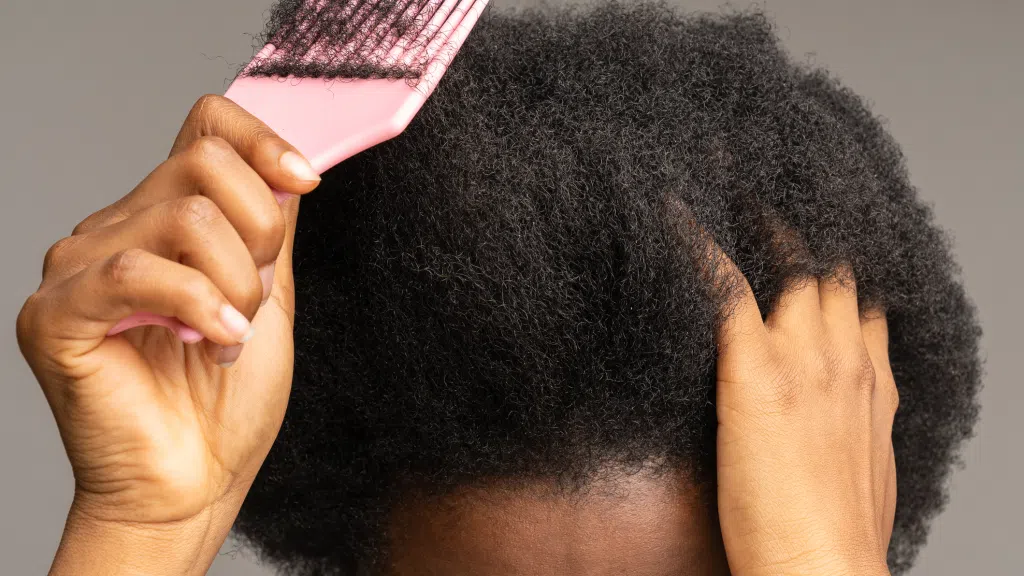Particularly for black women, braids can be more than just a hairstyle. They also serve as a powerful tool for self-expression, a protective styling method, and a way to connect to a deep cultural heritage. After all, hair braiding began as early as 5,000 years ago in Africa, and is still popular today.
However, the more you wear braids, you may notice hair loss or a receding hairline. Should you switch to a different style of hair? Here’s what you should know about braids and hair loss. Plus, we’ll give you tips to preserve your edges and protect your hair from potential long-term damage.
Are Braids Bad for Your Hair? Here’s the Truth:
Braids can be part of a healthy hair care routine. However, tight or heavy braids worn over long periods of time can lead to hair loss.
After all, protective hairstyles like box braids and cornrows are supposed to protect afro-textured hair from environmental stressors.
But, wearing tight, heavy braids eventually leads to traction alopecia. This is hair loss caused by excessive stress or constant pulling on the hair. Repeated tension leads to the hair follicles ripping directly from the scalp.
If you catch it early enough and change up your hairstyle, your hair may grow back. But, over time, traction alopecia can lead to scalp damage and permanent hair loss.
What to Know About Traction Alopecia
When the hair is pulled too tightly, the hair root, or follicle can become damaged and inflamed. As a result the hair shaft may pull out completely or the inflammation may cause pus-filled bumps to form at the root. And the hairs at the point of tension will become finer and thin out.
In most cases, people that experience traction alopecia from braids may notice a receding hairline, and patches of hair loss on the frontal and temporal regions of the head.
Read more about alopecia in black females, read our article, “African American Females Guide to Alopecia”.
Hair Loss Solutions for Braiding
If you wear braids and want to avoid long-term hair loss, here are a few helpful hair styling tips:
Reduce the Tension of Your Braids
Here’s some good news: you don’t have to stop wearing braided styles to avoid traction alopecia.
The tension and pulling of your hair when braided is what will ultimately contribute to your hair loss. So, if you reduce the tension, you reduce your risk of hair loss.
Consider these tips when braiding your hair.
- Instead of wearing tightly braided hair, loosen your braids, particularly around the edges (baby hairs) of your hairline. The hair on your edges is fragile and thus more susceptible to traction alopecia.
- Choose to wear thicker braids, as these don’t pull on the hair root as much as smaller braids do.
- Opt for larger braids or twists. Taking larger sections of hair distributes the tension across a larger area. This reduces stress on individual hair follicles.
- Avoid adding hair extensions to your braids. The added weight of extension increases the tension on your scalp.
- Consider wearing your braids for no longer than two months. As the braids grow out, prolonged wear can cause increased tension.
- Take breaks between braiding sessions to avoid tension on the same parts of the hair. Instead, alternate between different styles rather than wearing braids back-to-back.
Treat Your Scalp
Besides switching your braiding techniques , treating your scalp promotes overall hair and scalp health. This can help you avoid traction alopecia. Proper scalp care removes dead skin, which helps keep the scalp healthy and promotes natural hair growth.
Here are a few tips to treat your scalp.
- When wearing braids, gently clean your scalp with shampoo every 1-2 weeks. This prevents building, which can irritate the scalp and weaken hair follicles
- Moisturizing your scalp is important! Be sure to moisturize frequently. Go for a lightweight leave-in conditioner or use natural oils like coconut or jojoba.
- Avoiding excessive scratching of the scalp if it’s itchy. Try putting a dab of anti-itch oil every few days to any sensitive or itchy areas of the scalp.
The key to limiting hair loss from traction alopecia is to detect it in the early stage. Treating late-stage traction alopecia is difficult. In severe cases, one of the best options is a hair transplant.
Communicate With Your Stylist
Try to find an experienced hair stylist that knows about the risks of traction alopecia. If you are already noticing early signs of traction alopecia, let them know.
Remember, you do not have to endure painful braids! If you feel any pain during the braiding process, let your stylist know immediately.
It is perfectly okay to request a looser braiding technique. A good stylist will listen to your concerns and adjust as needed.
Hair Transplants for Traction Alopecia
For those with late-stage traction alopecia from braiding, a hair transplant is one of the most effective ways to reverse hair loss.
A hair transplant involves extracting hair from a donor site and implanting them to the balding areas of the scalp. With traction alopecia, hair loss usually happens in the temporal or frontal regions of the scalp. Transplanting healthy hairs to this area results in long-term growth.
There are two types of hair transplants – the FUE technique and FUT technique.
- The FUT technique removes a strip of skin with significant hair density from the scalp and uses it to create donor grafts transplanted to thinning areas.
- The FUE technique extracts single hair follicles.

For African American women and men, the FUT technique is recommended for a successful hair transplant. The FUE method does not work well with curly hair. African Americans generally have 4 type hair texture, which is curly or springy. Using the FUE method risks nicking the hair follicle and killing the folic root.
Natural Transplants is a Leading Clinic for Treating Traction Alopecia
Located in the United States, Natural Transplants has clinics in Fort Lauderdale and Bethesda, Maryland. We offer a travel incentive for patients outside the areas of our clinics.
Learn more about hairline transplants for men and women.


